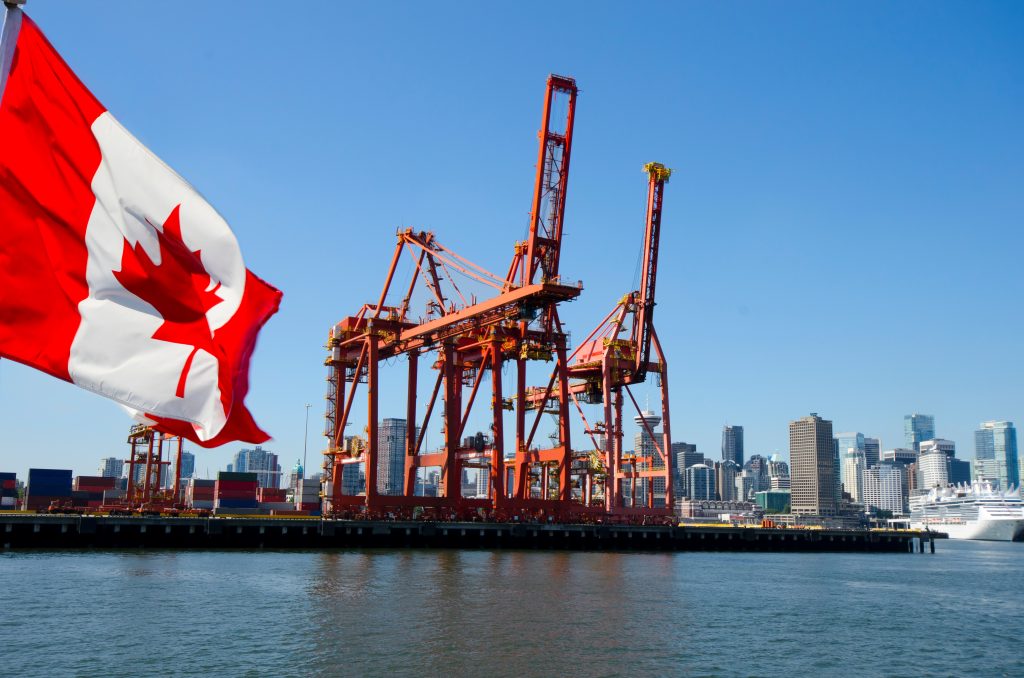

News
Economy
Longshore workers at Port of Prince Rupert feel the crunch as volumes decline
 The Port of Vancouver. Photo: Adobe Stock
The Port of Vancouver. Photo: Adobe Stock By Seth Forward, Prince Rupert Northern View
As the Port of Prince Rupert grapples with a 33 per cent decrease in container traffic, union and non-union port workers have been feeling the crunch, with many working as little as one shift a week for months.
A turbulent year for the Port of Prince Rupert, container volumes have dropped along with a weeks-long strike in July, meaning many longshore workers have been facing financial challenges, particularly as inflation has dramatically driven up the cost of living.
President of the International Longshore and Warehouse Union (ILWU) Local 505 Keith Cociani said the low traffic at the Port of Prince Rupert is affecting the entire community in a written statement to The Northern View.
“Container traffic through the Port of Prince Rupert is about half of what it was last year. Most of our casuals are not getting steady employment,” he said.
“Our workers are facing great financial challenges due to the lack of work, and high inflation. This is having a deep impact on the local economy. There are also social effects felt by everyone in the community when people are under-employed.”
After years of growth, the port has seen an extremely tough year, according to Prince Rupert Port Authority (PRPA) Vice President of Public Affairs and Sustainability Ken Veldman. This year looks to end with about 800,000 twenty-foot equivalent units (TEUs), the standard measure for containers, while in 2020, the port saw around 1.1 million TEUs.
“This has been a really slow year for the Port of Prince Rupert,” said Veldman. “There’s no denying that the intermodal business in particular is having an extremely tough year.”
A key contributor to the high number of Prince Rupert residents reaching out for help during this holiday season has been the lack of shifts available at the port, according to Captain Dawn Butt of the Prince Rupert Salvation Army.
“People are saying, `I am only getting one shift a week, a month,’ so people are really feeling the pinch,” Butt said.
While some workers getting second jobs is a temporary bandaid to the issue, the continued development of the port means new openings will be coming at some point, according to Cociani.
“In the short term, we are happy to see people finding other work to support their families. Long term, when business turns around, we will face challenges finding qualified workers to fill the positions which will open up,” Cociani said.
“We are working cooperatively with our employers to continue training programs and are confident that we can face these challenges as they come.”
There is a fear of workers leaving Prince Rupert due to a lack of work at the port according to Veldman, though he said their sector is not alone in this concern.
“Any employer is hyper-aware of losing experienced, trained, skilled employees is always a risk that is in the back of people’s mind, absolutely it is,” Veldman said.
“So this is not something that anybody is willing to sit around on. This is an urgent priority for everybody in terms of really reestablishing that value proposition and looking to build back the businesses as quickly as possible.”
Cociani said recent investments and diversification efforts from the PRPA give the ILWU 505 hope for the future, though there is no guarantee that next year will bring greener pastures.
“Though the next year will likely be difficult we are hoping to see some diversification of work, and perhaps some growth by the end of the year,” Cociani said.
According to Veldman and Cociani, the Port of Prince Rupert is not alone in its struggles, with other ports along the west coast feeling the crunch of inflation and a subsequent lower consumer demand.
“We’ve had a few years here where container supply chains in particular have seen a lot of ups and downs and through this year, we’ve seen record high inventories in North America, that’s been paired with slowing consumer demand in particular,” Veldman said.
“And the result of that has been that Transpacific trade is down, right across the west coast. It’s down in L.A. It’s down in Seattle. It’s down in Vancouver. So there’s absolutely a broader market backdrop here.”
Print this page
